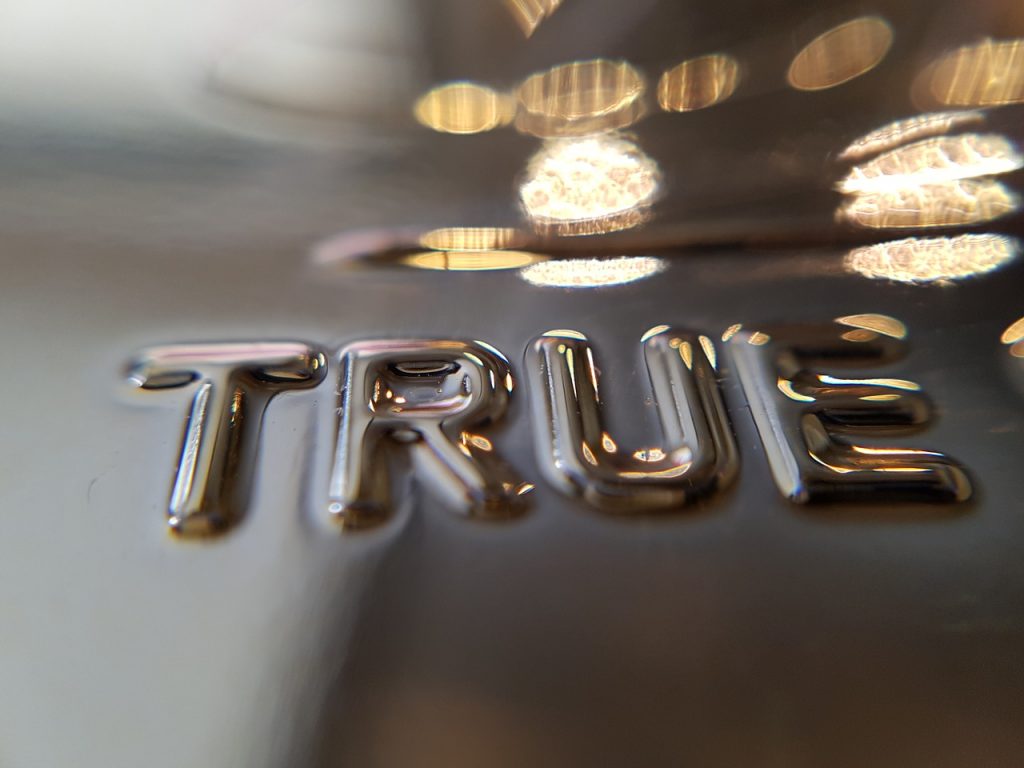Popular food brand Kellogg’s found itself in hot water in 2010 when it claimed its product Rice Krispies contained vital Vitamins A, B, C and E, which were necessary for the healthy growth and development of children. The multi-million dollar brand claimed that eating the Kellogg’s Rice Krispies, which contributed 25% of their daily needed nourishment, could save children from illnesses.
However, when they were unable to prove their claim, consumers sued the company for creating misleading advertisements. The Federal Trade Commission ordered the brand to stop its advertising campaign and slapped a hefty fine of $2.5 million on the company and also ordered it to make a donation of $2.5 million to charity.
The art of being honest
Dishonesty in marketing is a common thing. Almost all brands around the world exaggerate or bend the truth to get customers. While being slightly boastful does no one harm, things take a nasty turn when companies tell blatant lies about their products and services. This is something experienced copywriters and content marketers know that needs to be avoided for the greater good of the brand.
Being dishonest to customers can make brands lose a lot more than their face in front of customers. In fact, 78% of all brands claim they’ve been hurt in some form by being associated with objectionable content.
When brands are honest with customers, it makes them:
- Human and relatable
Everyone knows that companies are not run by machines, but by people who do make mistakes. If you’re honest about it, you’ll notice how customers are willing to forgive and accept you because they find you to be more like them and as a result, more relatable.
- Reliable
Brands that are open about the challenges they face, the failures they’ve encountered and the mistakes they make are perceived to be those who are willing to acknowledge their flaws, but unwilling to accept defeat. Your customers will be assured that you are a brand that seeks to provide them with only top-quality stuff and not riff-raff. Therefore, you become more reliable and trustworthy compared to others. This will also help you generate and retain customer goodwill for years to come.
- Unique
Your customers may be used to reading about or listening to brands who think no end of themselves. What they won’t be used to is a brand that’s blatant about its flaws, but finds itself still worth the investment. Something as different as this can generate a lot of interest and conversations from customers.
- A positive force
Honest content marketing is a soothing balm for customers. If you notice customers feeling antsy around you or being suspicious about your products, honest content addressing the problem will help ease their worry and convert any negative perceptions they have about you into positive ones.
- Attractive (to the right people)
Honesty appreciates honesty. The best benefit of honest content is how it can help you find like-minded customers. When you’re willing to put yourself out there and acknowledge your weaknesses, you exude confidence and charm; something people who possess the same outlook will absolutely love.
Get candid in 7 simple ways
The truth can be hard to read and harder to write. But with these seven easy-to-implement tips, you can get started on your uber-honest content marketing strategy:
- Be transparent about your origin
Companies around the world have unique stories to tell. Take Nike for example. The iconic sportswear brand has always been proud of their designer products made using state-of-the-art technology. But did you know that the soles of the famous Nike Moon Shoes were created using a waffle iron and not fancy machinery?
Ture, this reveal was a bit of a downer for clients who possessed this unique model in the 1970s, but Nike’s honesty about the development & design aspect garnered great respect for the brand’s creativity in using simple home appliances to create iconic footwear.
- Tell people who your products really are for and aren’t for
Not all products are for everyone and no amount of reassurance that the product is ‘universal’ can refute this fact. When marketing, it’s important to keep customers educated about who a particular product is for and who it isn’t.
Differentiate between the product ranges and specify what the product offers. Let people know whether the product is the right purchase for them or not. When you do this, you let your customers know that you care enough not to swindle them.
- Address the elephant in the room
Sometimes, certain problems or concerns are obvious to everyone, but no one wants to talk about it. But by bringing them up yourself, brands can ensure that customers are comfortable with you and your products.
Apple recently did this by addressing the worsening software condition of their Maps days before the application crashed for over four hours mid-July. The company took to social media acknowledging that their software let them down, but that they were working towards bettering the application. This helped keep customer tempers at bay when the crash happened.
- Poke fun at yourself
Humour is truly the best medicine, especially so when you know you haven’t met the mark. Renowned car rental company Avis had a marketing brainwave when faced with intense competition.
In an effort to connect with their clients, Avis released an advertisement, calling themselves the ‘little fish’ who always had to try harder by cleaning out ashtrays, filling in gas, giving customers a super-torque Ford and actually doing things customers wanted, because they couldn’t afford to have a devil-may-care attitude like their big-boned competitors. They were only Number 2 you see and had to work harder than the rest.
This little stint by Avis ended up being one of the most iconic advertisements created by a brand in the 1960s. You can see the ad here.
- If your competitors deserve it, praise them
Brands that are gracious enough to admit that they fell short on something, while their competitors didn’t, will find their popularity increasing tremendously.
Take world-famous art museums like the Louvre and the Van Gogh Museum. They are super-active on Instagram and Facebook, where they routinely pull each other’s legs and have stimulating conversations (coupled with sassy comebacks). But what’s better is how they praise each other and appreciate the art conservation efforts the other makes.
While they aren’t competitors in the traditional sense, they do vie for the top spot as the World’s most popular art museum. This unique marketing approach makes them much-loved giants both on social media and in the real world.
- Don’t give excuses, serve the truth
Samsung found itself at the heart of controversy when an external audit agency found the company breaking all corporate codes and human rights associated with employment of child labour in their China branch. Instead of making excuses and trying to weasel their way out of the mess, Samsung publicly apologised for the violations and promised to undo the damage.
They not only created content expressing their sorrow at being irresponsible employers but went ahead to stop under-age employment within all of their global premises by setting up a zero tolerance policy.
- Be open about your failures
Netflix’s Reed Hastings was the king of public apology, following his open blog post explaining why Netflix had a messed up pricing system when the company was transitioning from a part-DVD-part-online model to a full-fledged streaming application.
In his blog post, Hastings explained how he messed up, why and what he intended to do to rectify the situation. His heartfelt apology touched millions and people continued to give their patronage to Netflix. The platform’s success is a testament to how honesty can do wonders for a brand.
5 super-easy techniques to create genuine promotional material
Now that you know the basic tenets of transparency in marketing, here are our Top 5 tips to making your content more sincere and forthright:
- Use honest headers
The very first component your reader sees of your content is the header/title. Making it straightforward is the best way to introduce the content while setting reader expectations. Each customer has certain expectations when they read your content. Making your header click-bait will only serve to annoy readers seriously considering purchasing your product.
When writing headers, come straight-to-the-point. Tell your readers what the piece is about in simple words. For example, if your article is about child-friendly pet purchase, you can use a header like, “Rottweilers Can be Too Aggressive for Your Baby: Here’s Why”, instead of writing a header like “Meet The Dog Who Can Strike Fear Into a Grown Man’s Heart”.
While the latter is creative, it can set the wrong expectations for the reader, ruining the reading experience.
- Share advice you can vouch for in the content
Never post content about things you haven’t tried yourself or haven’t seen working for someone else. This can make your advice dishonest. At Godot, our writers only talk about content writing techniques we’ve tried and tested ourselves. Working with thousands of clients allows us to experiment with writing styles and formats, which we then share with our readers.
Social media influencer and founder of Vaynermedia, Gary Vaynerchuk is a super-honest CEO. Whatever advice he posts on social media and his blog, are always tried and tested by him and his team. This ensures that his advice has integrity and is worth being actioned.
- Tell people why they should/shouldn’t opt-in to your emails
Emailers are possibly one of the most difficult-to-sell free content on a brand’s website. People hate the idea of finding their inbox flooded with marketing content and never sign-up for emails that may be useful.
Rebecca Healy from Kontrary found a way around this challenge with a very creative email opt-in message. By acknowledging that there are sites out there that give ridiculous advice on career & life, Rebecca promises that readers get no “BS insights” from here. Instead, what you do get is time-tested practical feedback about taking control over your life. See her opt-in here.
- Provide insights you can prove works in your mailers
A great way to be authentic in your content marketing is to provide actionable inputs you’ve used yourself. When brands advise readers on topics they specialise in and provide solutions they’ve implemented, they forge a deeper and more fruitful relationship with the readers. On their part, readers too respect the brand for the effort put into creating the content. They are also more likely to take your advice on product/service purchase and may buy from you more too.
Emailers are especially helpful in providing valuable content to readers and making it personal. Business marketing company Fizzle does a wonderful job of creating email content for their business clients. Their mailers offer implementable insights, give plenty of examples of how their own team, their readers and their competitors tried a solution and how it helped them succeed. Fizzle takes a step further by personalising these stories to help their own readers experience success.
- Be self-deprecating in your advertising (but don’t overdo it)
Self-deprecating humour is one of the best kinds of humour for companies. Why? It makes brands more human and authentic when they poke fun at themselves. Research shows that 63% of millennial customers purchase from authentic brands (brands who are honest about who they are and what they do), 47% seek employment with them and 23% back them financially in the form of investments.
Self-deprecating humour plays very well in the content strategy of dying brands. Take Buick for example. The cars by the automaker were for long perceived to be ‘Old Men’s Cars’ given their traditional design, low-speed limits and elderly-friendly features. They weren’t preferred by the growing millennial population. To combat this thinking, Buick directed a self-deprecating advertisement which involved a bunch of groomsmen looking shell-shocked in discovering that a sexy, chic car at the wedding was a Buick. See the video here.
3 more examples of ridiculously honest marketing (which worked!)
- The Humane Society
Most pet adoption centres resort to creating content that makes their animals look as angelic as possible. This results in readers not trusting these write-ups and not making adoption applications.
But not The Humane Society. Their super-hilarious and honest article about the up-for-adoption dog, Eddie the Terrible, was such a major hit on social media, the institution received thousands of adoption requests for the little guy, minutes after the post went live.
In a short article, the Society tells readers why they shouldn’t adopt little Eddie and why he makes for the most horrible pet. Read the article and decide for yourself if honesty was the best policy.
- Ugli Campus
It all started when BBC, TCN UK and JP Creative bought an ancient looking building with half its glass windows missing, to create co-sharing office space for start-ups on a shoestring budget. Deciding to spend money only on the interiors and not the exteriors, the three partners let the incomplete building remain as it was – an eyesore.
To promote people to lease out space in the premises, the management decided to indulge in self-deprecating advertising by calling themselves ‘Ugli Campus’ and created a stellar tagline – ‘Lovely Inside’. They went on to create engaging blogs and social media posts that were a hit with start-ups.
- Hans Brinker
So, you own the worst travellers’ hostel in the world. How do you promote your boarding & lodging services? This was the question that Hans Brinker, a hostel in Amsterdam that calls itself ‘The Worst Hotel in the World,’ faced.
Instead of fretting over their spoilt reputation, the brand went ahead and reinforced people’s notions about the hostel by proving why they were the best lodging for young travellers. By poking fun at the residents and themselves, Hans Brinker showed why they were (and are today) one of the most booked travellers’ hostels in Amsterdam. Take a look.
Image credits: Pixabay






